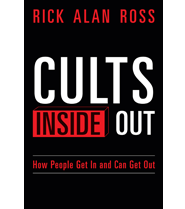Fake moon landings and the Loch Ness monster: What makes conspiracy theories stick
Published By admin

In the mediaeval text, Vita Sancti Columbae (Life of St Columba), the monk Adamnán of Iona describes an encounter between the revered missionary St Columba and an “aquatic monster”. It was the year 564 AD, so the story goes, and as he travelled through Scotland spreading the word of Christ, St Columba once reached the banks of the river Ness. Desirous of crossing the river, St Columba instructed one of his companions to retrieve a boat moored on the opposite shore. As the loyal acolyte dove into the water, a terrifying monster emerged from the river’s murky depths. All but St. Columba were frozen with fear. “Thou shalt go no further, nor touch the man; go back with all speed”, he is believed to have thundered, and thus chastised, the creature dutifully disappeared. Indeed, so potent was this invective that centuries later, when hundreds gathered in the Scottish Highlands in late August this year to search for the Loch Ness Monster, there was still no sign of this mythical beast.
The legend of “Nessie”, as the Loch Ness Monster is affectionately known, has birthed an industry and attracted millions of tourists over the years. And it is far from being the only conspiracy theory to have garnered a global following. The success of the Indian Space Research Organisation’s lunar mission, Chandrayaan 3, is a good time to remember that though five decades have passed since Niel Armstrong set foot on the moon in 1969, theories about the moon landing hoax continue to thrive in the dark corners of the internet. In a 2021 survey conducted in the United States, 29 per cent of the respondents disagreed or were unsure when asked if NASA’s Apollo mission astronauts actually landed on the moon. Similarly, 25 per cent of the people surveyed by the TRESCA research project in the European Union believed the moon landing had been faked.
For the devout conspiracy theorists, there is no dearth of material. They can, for instance, dip their toes in the belief that global affairs are orchestrated by secretive cliques, like the Illuminati or the New World Order; or embrace the more fanciful notion that the Earth is flat. The Covid-19 pandemic had, of course, generated its own share of conspiracy theories that could be added to this list. While some contended that the vaccines would implant microchips in people, there were others who viewed it as an insidious means of population control. It is tempting to dismiss these instances as the peddling of peculiar tales by the fringe but a study conducted across 24 countries by the YouGov-Cambridge Globalism Project in 2022, made some sobering findings. Of the countries surveyed, the study noted that “India had the highest average proportion of people answering ‘definitely or probably true’” to queries about popular conspiracy theories. (A quarter of the Indians surveyed believed the moon landings were faked and nearly half believed a secret group rules the world.)
Content retrieved from: https://indianexpress.com/article/opinion/columns/fake-moon-landings-loch-ness-monster-conspiracy-theories-8960180/.






